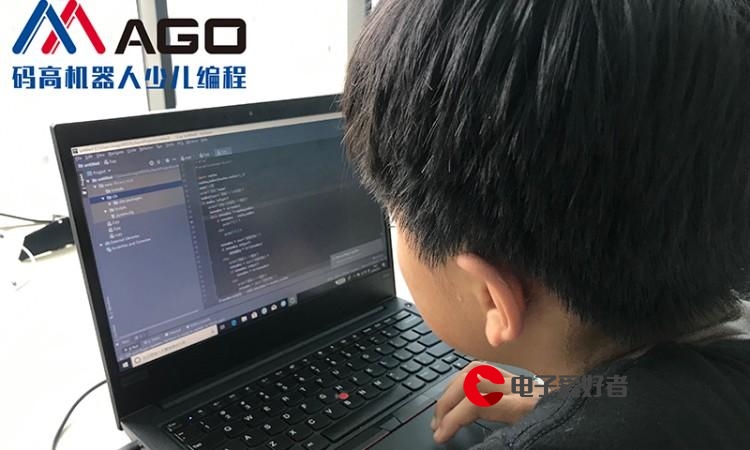 Thread ThreadLocal ThreadLocalMap?蒙圈"/>
Thread ThreadLocal ThreadLocalMap?蒙圈"/>
Thread ThreadLocal ThreadLocalMap?蒙圈
闲谈ThreadLocal
前面在我的GitHub仓库 V-LoggingTool 中有简单的使用过ThreadLocal,主要用在了切面类中,功能上需要取到前置增强拦截到的用户信息暂存,执行到后置增强时从该ThreadLocal中取出用户信息并使用。
今天咱们就唠唠ThreadLocal的相关知识,了解一下他的数据结构、用法、原理等。咱们层层深入…
看了网上不少关于ThreadLocal的讲解,源码比较简单但是对于Thread、ThreadLocal、ThreadLocalMap的关系讲的有点晦涩,尤其是那张亘古不变的ThreadLocal的内部结构图,额…我真的看了很久才明白是怎么回事。
ThreadLocal工具类
ThreadLocal是一个本地线程副本变量工具类,主要用于将私有线程和该线程存放的副本对象做一个映射,各个线程之间的变量互不干扰。
官方说的还是比较明白了,提炼关键字工具类,在我看来ThreadLocal就是提供给每个线程操作变量的工具类,做到了线程之间的变量隔离目的
内部结构图
接下来就是看图说话:
- 每个Thread线程内部都有一个ThreadLocalMap。
- Map里面存储线程本地对象ThreadLocal(key)和线程的变量副本(value)。
- Thread内部的Map是由ThreadLocal维护,ThreadLocal负责向map获取和设置线程的变量值。
- 一个Thread可以有多个ThreadLocal。
每个线程都有其独有的Map结构,而Map中存有的是ThreadLocal为Key变量副本为Vaule的键值对,以此达到变量隔离的目的。
平时是怎么使用ThreadLocal的?
package threadlocal;/*** @Auther: Xianglei* @Company: Java编程之道* @Date: 2020/7/2 21:44* @Version 1.0*/
public class main {private static ThreadLocal<String> sThreadLocal = new ThreadLocal<>();public static void main(String args[]) {sThreadLocal.set("这是在主线程中");System.out.println("线程名字:" + Thread.currentThread().getName() + "---" + sThreadLocal.get());//线程anew Thread(new Runnable() {@Overridepublic void run() {sThreadLocal.set("这是在线程a中");System.out.println("线程名字:" + Thread.currentThread().getName() + "---" + sThreadLocal.get());}}, "线程a").start();//线程bnew Thread(new Runnable() {@Overridepublic void run() {sThreadLocal.set("这是在线程b中");System.out.println("线程名字:" + Thread.currentThread().getName() + "---" + sThreadLocal.get());}}, "线程b").start();//线程c new Thread(() -> {sThreadLocal.set("这是在线程c中");System.out.println("线程名字:" + Thread.currentThread().getName() + "---" + sThreadLocal.get());}, "线程c").start();}
}输出结果如下
线程名字:main---这是在主线程中
线程名字:线程b---这是在线程b中
线程名字:线程a---这是在线程a中
线程名字:线程c---这是在线程c中
Process finished with exit code 0
可以看出每个线程各通过ThreadLocal对自己ThreadLocalMap中的数据存取并没有出现脏读的现象。就是因为每个线程内部已经存储了ThreadLocal为Key变量副本为Vaule的键值对。(隔离了)
可能你有点懵,ThreadLocal是怎么把变量复制到Thread的ThreadLocalMap中的?
咱们接着唠…
当我们初始化一个线程的时候其内部干去创建了一个ThreadLocalMap的Map容器待用。
public class Thread implements Runnable {/* ThreadLocal values pertaining to this thread. This map is maintained* by the ThreadLocal class. */ThreadLocal.ThreadLocalMap threadLocals = null;
}
当ThreadLocalMap被创建加载的时候其静态内部类Entry也随之加载,完成初始化动作。
static class Entry extends WeakReference<ThreadLocal<?>> {/** The value associated with this ThreadLocal. */Object value;Entry(ThreadLocal<?> k, Object v) {super(k);value = v;}
}
到此,线程Thread内部的Map容器初始化完毕,那么它又是如何和ThreadLocal缠上关系,ThreadLocal又是如何管理键值对的关系。
ThreadLocal探析
我们就其核心方法分析一下内部的逻辑,同时解答上述存在的疑问:
-
set()方法用于保存当前线程的副本变量值。
-
get()方法用于获取当前线程的副本变量值。
-
initialValue()为当前线程初始副本变量值。
-
remove()方法移除当前线程的副本变量值。
set方法
/*** Sets the current thread's copy of this thread-local variable* to the specified value. Most subclasses will have no need to* override this method, relying solely on the {@link #initialValue}* method to set the values of thread-locals.** @param value the value to be stored in the current thread's copy of* this thread-local.*/
public void set(T value) {Thread t = Thread.currentThread();ThreadLocalMap map = getMap(t);if (map != null)map.set(this, value);elsecreateMap(t, value);
}ThreadLocalMap getMap(Thread t) {return t.threadLocals;
}void createMap(Thread t, T firstValue) {t.threadLocals = new ThreadLocalMap(this, firstValue);
}
解说一下你就懂了:
当我们在Thread内部调用set方法时:
- 第一步会去获取
调用当前方法的线程Thread。 - 然后顺其自然的拿到当前
线程内部的ThreadLocalMap容器。 - 最后就把变量
副本给丢进去。
没了…懂了吗,ThreadLocal(就认为是个维护线程内部变量的工具!)只是在Set的时候去操作了Thread内部的·ThreadLocalMap将变量拷贝到了Thread内部的Map容器中,Key就是当前的ThreadLocal,Value就是变量的副本。
get方法
/*** Returns the value in the current thread's copy of this* thread-local variable. If the variable has no value for the* current thread, it is first initialized to the value returned* by an invocation of the {@link #initialValue} method.** @return the current thread's value of this thread-local*/
public T get() {Thread t = Thread.currentThread();ThreadLocalMap map = getMap(t);if (map != null) {ThreadLocalMap.Entry e = map.getEntry(this);if (e != null)return (T)e.value;}return setInitialValue();
}ThreadLocalMap getMap(Thread t) {return t.threadLocals;
}private T setInitialValue() {T value = initialValue();Thread t = Thread.currentThread();ThreadLocalMap map = getMap(t);if (map != null)map.set(this, value);elsecreateMap(t, value);return value;
}protected T initialValue() {return null;
}
- 获取当前线程的ThreadLocalMap对象
- 从map中根据this(当前的threadlocal对象)获取线程存储的Entry节点。
- 从Entry节点获取存储的对应Value副本值返回。
- map为空的话返回初始值null,即线程变量副本为null。
remove方法
清除Map中的KV
/*** Removes the current thread's value for this thread-local* variable. If this thread-local variable is subsequently* {@linkplain #get read} by the current thread, its value will be* reinitialized by invoking its {@link #initialValue} method,* unless its value is {@linkplain #set set} by the current thread* in the interim. This may result in multiple invocations of the* <tt>initialValue</tt> method in the current thread.** @since 1.5*/
public void remove() {ThreadLocalMap m = getMap(Thread.currentThread());if (m != null)m.remove(this);
}ThreadLocalMap getMap(Thread t) {return t.threadLocals;
}/*** Remove the entry for key.*/private void remove(ThreadLocal<?> key) {Entry[] tab = table;int len = tab.length;int i = key.threadLocalHashCode & (len-1);for (Entry e = tab[i];e != null;e = tab[i = nextIndex(i, len)]) {if (e.get() == key) {e.clear();expungeStaleEntry(i);return;}}}
下面再认识一下ThreadLocalMap,一个真正存储(隔离)数据的东西。
ThreadLocalMap
ThreadLocalMap是ThreadLocal的内部类,实现了一套自己的Map结构,咱们看一下内部的继承关系就一目了然。
其Entry使用的是K-V方式来组织数据,Entry中key是ThreadLocal对象,且是一个弱引用(弱引用,生命周期只能存活到下次GC前)。
对于弱引用引发的问题我们最后再说。
static class Entry extends WeakReference<ThreadLocal<?>> {/** The value associated with this ThreadLocal. */Object value;Entry(ThreadLocal<?> k, Object v) {super(k);value = v;}}
ThreadLocalMap的成员变量
static class ThreadLocalMap {/*** The initial capacity -- MUST be a power of two.*/private static final int INITIAL_CAPACITY = 16;/*** The table, resized as necessary.* table.length MUST always be a power of two.*/private Entry[] table;/*** The number of entries in the table.*/private int size = 0;/*** The next size value at which to resize.*/private int threshold; // Default to 0
}
HashCode 计算
ThreaLocalMap中没有采用传统的调用ThreadLocal的hashcode方法(继承自object的hashcode),而是调用nexthashcode,源码如下:
private final int threadLocalHashCode = nextHashCode();
private static AtomicInteger nextHashCode = new AtomicInteger();//1640531527 能够让hash槽位分布相当均匀
private static final int HASH_INCREMENT = 0x61c88647;
private static int nextHashCode() {return nextHashCode.getAndAdd(HASH_INCREMENT);
}
Hash冲突
和HashMap的最大的不同在于,ThreadLocalMap解决Hash冲突的方式就是简单的步长加1或减1及线性探测,寻找下一个相邻的位置。
/*** Increment i modulo len.*/
private static int nextIndex(int i, int len) {return ((i + 1 < len) ? i + 1 : 0);
}/*** Decrement i modulo len.*/
private static int prevIndex(int i, int len) {return ((i - 1 >= 0) ? i - 1 : len - 1);
}
ThreadLocalMap采用线性探测的方式解决Hash冲突的效率很低,如有大量不同的ThreadLocal对象放入map中时发送冲突。所以建议每个线程只存一个变量(一个ThreadLocal)就不存在Hash冲突的问题,如果一个线程要保存set多个变量,就需要创建多个ThreadLocal,多个ThreadLocal放入Map中时会极大的增加Hash冲突的可能。
清楚意思吗?当你在一个线程需要保存多个变量时,你以为是多次set?你错了你得创建多个ThreadLocal,多次set的达不到存储多个变量的目的。
sThreadLocal.set("这是在线程a中");
Key的弱引用问题
看看官话,为什么要用弱引用。
To help deal with very large and long-lived usages, the hash table entries use WeakReferences for keys.
为了处理非常大和生命周期非常长的线程,哈希表使用弱引用作为 key。
- 生命周期长:暂时可以想到线程池中的线程
ThreadLocal在没有外部对象强引用时如Thread,发生GC时弱引用Key会被回收,而Value是强引用不会回收,如果创建ThreadLocal的线程一直持续运行如线程池中的线程,那么这个Entry对象中的value就有可能一直得不到回收,发生内存泄露。
-
key 如果使用强引用:引用的ThreadLocal的对象被回收了,但是ThreadLocalMap还持有ThreadLocal的强引用,如果没有手动删除,ThreadLocal不会被回收,导致Entry内存泄漏。
-
key 使用弱引用:引用的ThreadLocal的对象被回收了,由于ThreadLocalMap持有ThreadLocal的弱引用,即使没有手动删除,ThreadLocal也会被回收。value在下一次ThreadLocalMap调用set,get,remove的时候会被清除。
Java8中已经做了一些优化如,在ThreadLocal的get()、set()、remove()方法调用的时候会清除掉线程ThreadLocalMap中所有Entry中Key为null的Value,并将整个Entry设置为null,利于下次内存回收。
Java8中for循环遍历整个Entry数组,遇到key=null的就会替换从而避免内存泄露的问题。
private int expungeStaleEntry(int staleSlot) {Entry[] tab = table;int len = tab.length;// expunge entry at staleSlottab[staleSlot].value = null;tab[staleSlot] = null;size--;// Rehash until we encounter nullEntry e;int i;for (i = nextIndex(staleSlot, len);(e = tab[i]) != null;i = nextIndex(i, len)) {ThreadLocal<?> k = e.get();if (k == null) {e.value = null;tab[i] = null;size--;} else {int h = k.threadLocalHashCode & (len - 1);if (h != i) {tab[i] = null;while (tab[h] != null)h = nextIndex(h, len);tab[h] = e;}}}return i;}
通常ThreadLocalMap的生命周期跟Thread(注意线程池中的Thread)一样长,如果没有手动删除对应key(线程使用结束归还给线程池了,其中的KV不再被使用但又不会GC回收,可认为是内存泄漏),一定会导致内存泄漏,但是使用弱引用可以多一层保障:弱引用ThreadLocal会被GC回收,不会内存泄漏,对应的value在下一次ThreadLocalMap调用set,get,remove的时候会被清除,Java8已经做了上面的代码优化。
总结
- 每个ThreadLocal只能保存一个变量副本,如果想要一个线程能够保存多个副本以上,就需要创建多个ThreadLocal。
- ThreadLocal内部的ThreadLocalMap键为弱引用,会有内存泄漏的风险。
- 每次使用完ThreadLocal,都调用它的remove()方法,清除数据。
更多推荐
Thread ThreadLocal ThreadLocalMap?蒙圈












发布评论